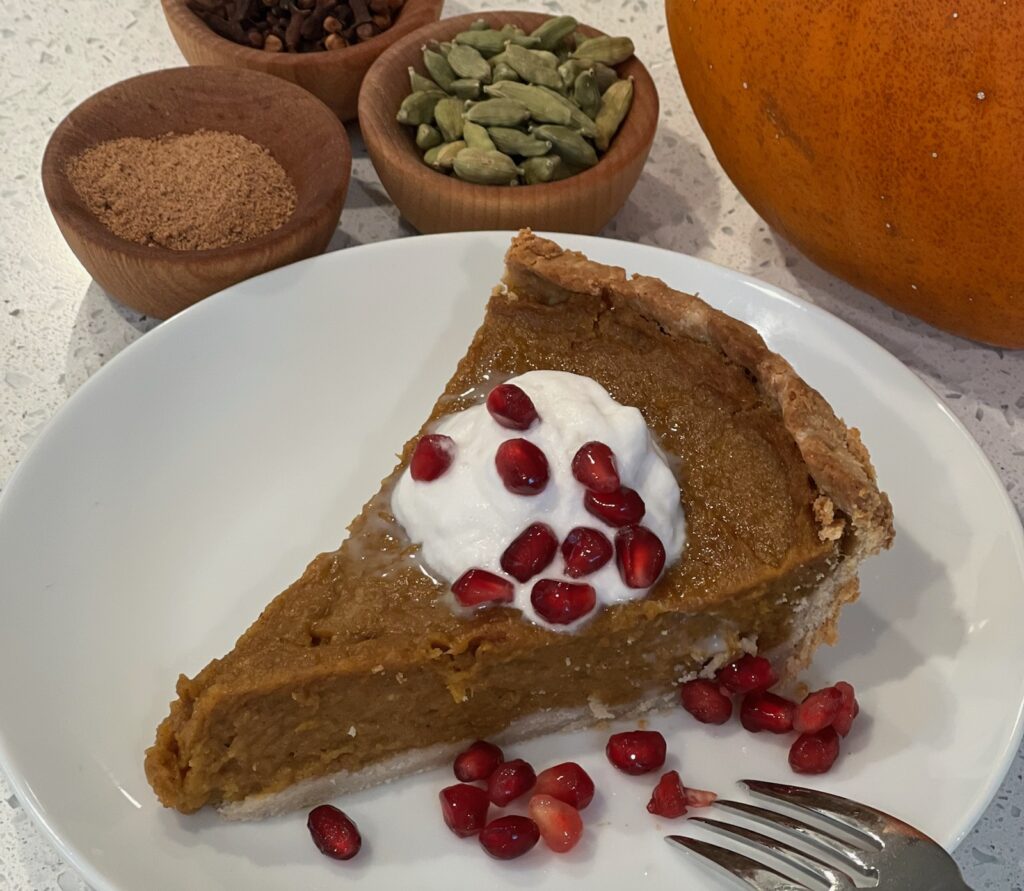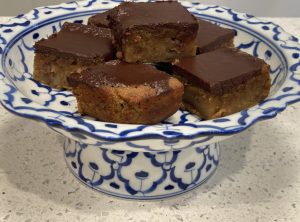Thanksgiving Traditions for GF-Vegans

Photo by Ingrid Beckman
No more turkey for us, but I still crave a good pumpkin pie, and with that in mind, I joyfully present the Sacred & Delicious approach to Vegan and Gluten-Free Pumpkin Pie! Our diets may change dramatically as we evolve from omnivore to vegetarian to vegan, but the longing for certain Thanksgiving traditions remains the same.
The Filling
I was determined to meet three criteria when developing this recipe: the pie must be delicious, healthy, and beautiful on the plate. In other words, in spite of the limitations of vegan and gluten-free baking, the recipe has to actually work. Will a piece of pie that has no eggs as a binder be able to sit upright on a plate? The answer is a resounding “Yes!”
To keep the pie delicious and healthy, I start by baking a sugar pumpkin, a smaller pumpkin than the regular field pumpkins used for carving. I prefer fresh pumpkin to canned because—well, because it’s fresh! It will take 10 minutes to scrape out the seeds and surrounding pulp in which they’re embedded, but then you can walk away as it bakes.
Using fresh pumpkin for a vegan pie could be problematic because fresh tends to be more watery than canned. To dry it out, I bake the pumpkin for an hour, which is longer than you’d expect. I then strain the cooked pumpkin before using it in the filling. The other challenge is how to bind the liquid filling without eggs. I used a combination of psyllium husk and tapioca starch in this version. (Out of curiosity, the next time I make it, I’ll use only psyllium.)
The Crust
I’ve never found a pre-made, store-bought GF crust that is also vegan. For this reason, I was determined to make my own crust this year—even though I’m not an expert baker. I have yet to perfect lovely, fluted ridges for a picturesque crust. However, this crust does its job holding the yummy, spiced pumpkin filling, and it’s also tasty.
You could use a gluten-free mix for the crust, but I find these mixes to be too high in starch (potato starch, tapioca, rice flour, guar gum, etc.) so I avoid them. I prefer to add at least a little bit of nutritional value to my crusts. In this experiment I used King Arthur Gluten-Free Multipurpose Flour, sweet sorghum, and almond flour.
Season of Gratitude
As another holiday season begins, let me close by thanking each of you for your enthusiastic support of the Sacred & Delicious blog. Your commitment inspires me to continue sharing the wisdom of Ayurveda and its timeless principles of health, wellness, and delicious food.
As we gather around holiday tables with so much abundance, may we all remember to pause and give thanks. May everyone, everywhere, have enough nourishing food to eat—and may there be peace and harmony within and among nations. Happy Thanksgiving!
PS Two more favorite holiday dishes are these Holiday Sweet Potatoes with Glazed Pecans—beyond delicious! And Holiday Dressing (Sacred & Delicious: A Modern Ayurvedic Cook, page 164). Looking for more GF pumpkin dishes? Try any of these amazing dishes: Chocolate Pumpkin Squares, Spiced Pumpkin Pound Cake, and Pumpkin Soup.





